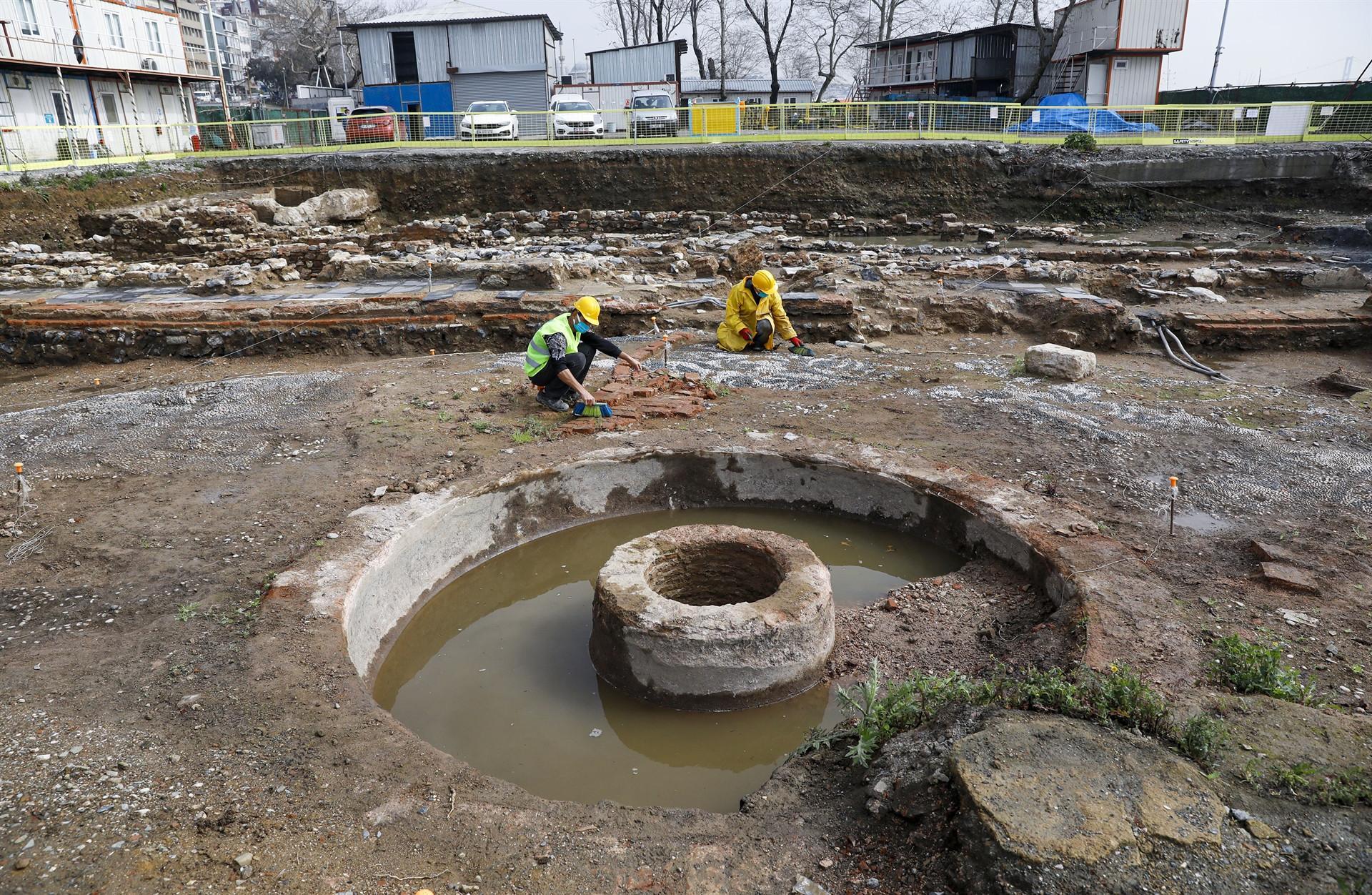Historical artifacts found in Kabataş
ISTANBUL

Works at the Kabataş metro station have unearthed archaeological remains in the area. Archaeologist Mehmet Ali Polat said that they will highly likely find a small ancient harbor as works progress.
In the area that will become the Kabataş station of the Kabataş-Beşiktaş-Mecidiyeköy-Mahmutbey metro line, archaeological excavations have been carried out by the Istanbul Archeology Museums for a year. Remains began to come to light just one meter below the surface during the excavations. In the area, where lie the remains of Europe’s first canned food factory, mosaics were found.
Small finds from the classical period of the 6th century B.C. were also unearthed four meters below the sea level. Archaeologists anticipate finding an ancient harbor fill as they go deeper.
“This is the Kabataş station area of the Kabataş-Beşiktaş-Mecidiyeköy-Mahmutbey metro line. Here, there is a study carried out by the Istanbul Archeology Museums. Istanbul Archeology Museums carry out approximately 250 excavations in Istanbul throughout the year. Some of them are big projects, such as the excavations of metro projects. This is a station area of the metro line. Remains started to come to light in one meter from the surface. Here we found the foundations of Europe’s first canned food factory, built in the late 19th century, in 1891. Its name is Ermys Canned Food Factory. Historical documents show that mostly tomatoes and peas were produced here. We found the stone foundations of this factory. Of course, since it collapsed over time, only the foundations of the factory have survived to the present day,” he said.
Stating that they found the pebble mosaic floor right next to the factory, Polat said, “There is a large courtyard right next to the canned food factory. This is a pebble mosaic-floored courtyard dating back to the 1800’s, that is, a little earlier than the factory. There is also an ornamental pool right in the middle of the pebble mosaics. In other words, a social area came to light. In addition, there are also foundation remains from the late 1700s and early 1800s. Documentation studies of these remains continue.”
Stating that they also found small finds from the 6th century B.C. four meters below the sea level, Polat said that these finds were delivered to the Istanbul Archeology museums.
“Probably, as we go deeper here, we will come across finds from the 5th-6th century B.C., from the Roman period. There was no settlement area on the Bosphorus line in the 5th-6th century B.C. That’s why the ruins we found here are very important for the Bosphorus line archeology. These findings are suggesting that there may be a small bay and an ancient harbor here. When we look at the topography, it is understood from the historical records that this place was a small bay and was filled in the Ottoman period. Probably, when we go deeper, we will come across a small ancient harbor fill,” Polat said.

















